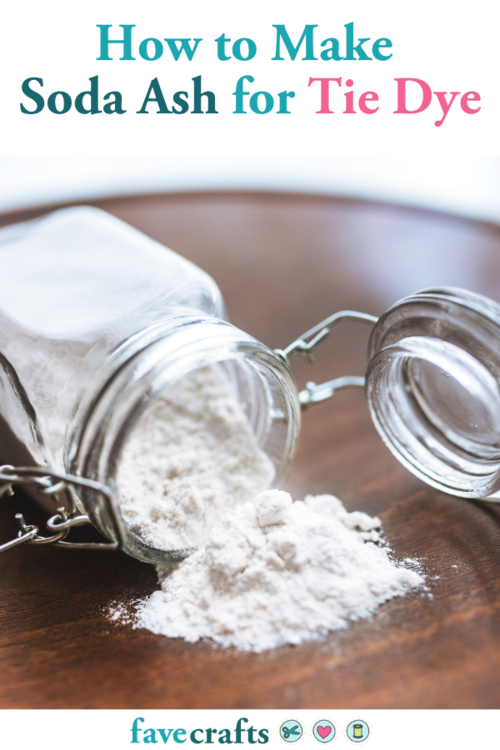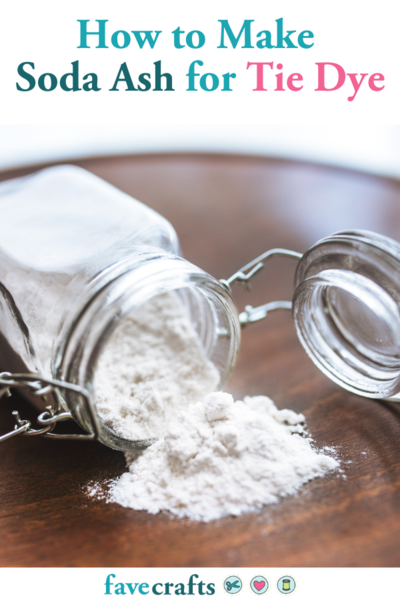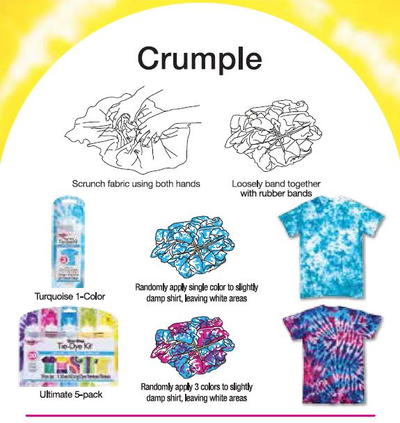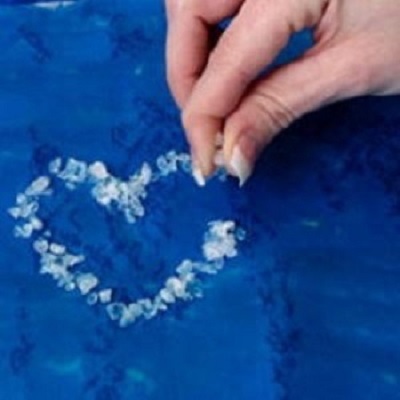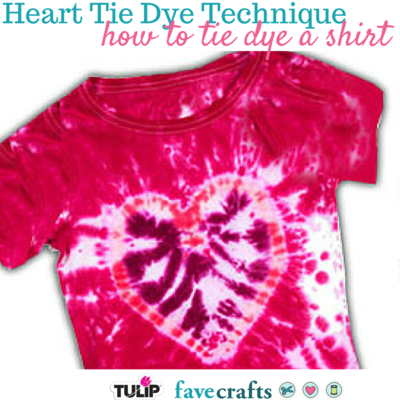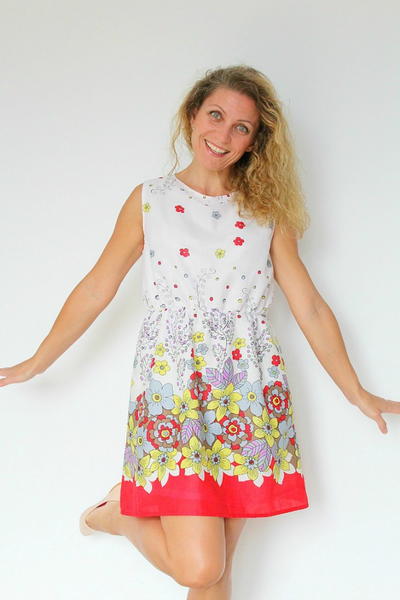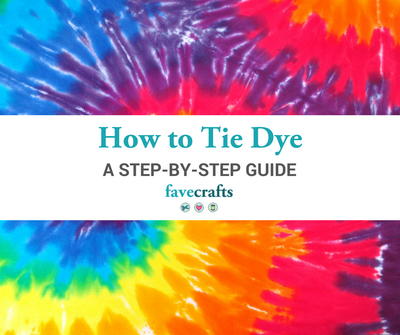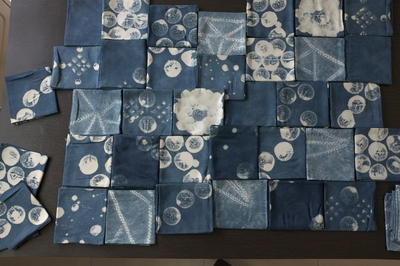How to Make Soda Ash for Tie Dye
Get soda ash tie dye instructions here
One of the most common questions we see is How to Make Soda Ash for Tie Dye, and the answer is actually very simple! You probably have everything you need already in your house.
To make soda ash for tie dye, just take baking soda and heat it to 300 degrees F for an hour!
Both baking soda and soda ash are made up of sodium and carbon. Heating baking soda releases carbon dioxide and water vapor which leaves behind just Sodium Carbonate.
Sodium Carbonate, or soda ash, is a mild alkali that is used to increase pH levels. Although its chemical make-up is very similar to baking soda, soda ash can increase pH levels nearly three times more than the same amount of baking soda.
A higher pH level is required for reactive dyes to bond with the fabric. The soda ash activates the fixing step which allows those dyes to bond. Many natural dyes and pigments will just coat the outside of the fabric and wash out or fade over time. Reactive dyes create a chemical bond with the fabric which allows the color to remain bright.
Looking for free craft tutorials? Get free projects delivered straight to your inbox!
Subscribe to FaveCrafts
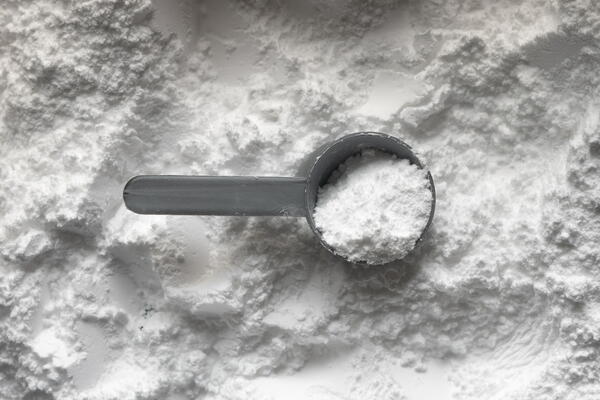
Do You Need Soda Ash for Tie Dye?
There are dyes and pigments which do not require an alkali fixation. Pigments and disperse dyes simply coat the fabric rather than bonding with it as reactive dyes do. Because of this, it is much more common for the colors to fade over time.
A more promising option is an acid dye. These dyes react in low pH zones rather than in high pH so soda ash is not needed. Typically though, acid dyes work better on protein fibers while reactive dyes work better on plant or cellulosic fibers.
Acid dyes - silk, nylon, and wool
Reactive dyes - cotton, rayon, viscose, linen, and silk
For plant-based fabrics, these materials are treated with soda ash to raise their pH and the dye interacts with the cellulose molecules forming a permanent bond. Materials with protein fibers can also be dyed using reactive dyes to varying success levels. Research is currently being done on the effectiveness of reactive dies on wool.
One of the main reasons to stick with reactive dyes is the environmental effects. Since reactive dyes are bonded to the fabric, they will not bleed into wash water which ends up in rivers and other natural bodies of water. In addition, many acid dyes are premetallized which can lead to increases of metallic components in drinking water.
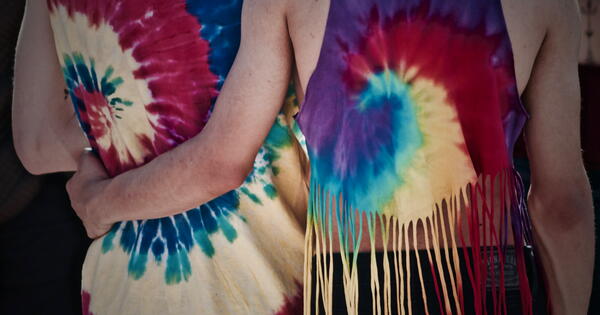
Soda Ash Tie Dye Instructions
Now that you know the importance of soda ash, you’re probably ready to make it! Though you can buy soda ash from online retailers and from pool supply stores, it is more budget-friendly to make homemade soda ash for tie dye.
This is a super simple process, but the science behind it is so interesting. Baking soda, or sodium bicarbonate, is a hydrate, and heating it leads to a chemical reaction where carbon dioxide and water are released. What’s left afterward is sodium carbonate, or soda ash.
To start this reaction, simply pour out a thick layer (about an inch) of baking soda over a baking sheet. Heat your oven to 300 degrees F and bake the baking soda for about an hour. The resulting soda ash will be grainier than the original baking soda and will have lost a portion of its initial weight.
At this point, there are three ways to use your soda ash in tie dyeing. You can add it before, during, or after the dye process.
1. To add it before, soak the fabric in a solution of soda ash and water for at least 5 minutes. After this, wring the excess water from the fabric and proceed with tie dyeing.
2. To add it during, mix the soda ash directly in your bottles with the dye. We recommend one teaspoon of dye powder with one teaspoon of soda ash and one cup of water.
3. To add it after, immediately soak the fabric in a solution or soda ash and water. You will need to add salt to prevent the dye from running. This method is not recommended as the dye could bleed before it sets and ruin the pattern. Use this method only as a last resort.

